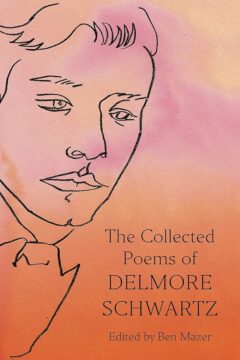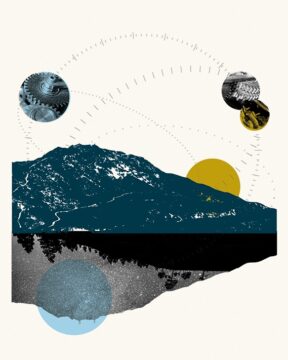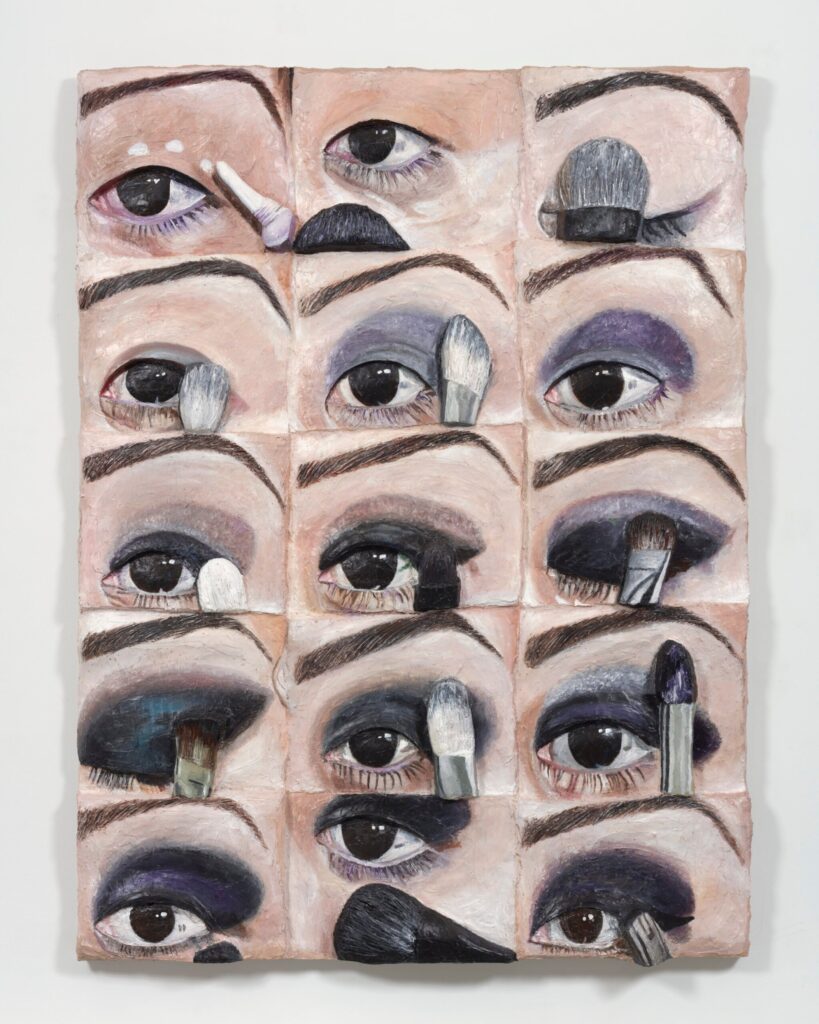Enjoying the content on 3QD? Help keep us going by donating now.
Category: Recommended Reading
Time Expansion Experiences: Why Time Slows Down in Altered States of Consciousness
Steve Taylor in Singularity Hub:
 We all know that time seems to pass at different speeds in different situations. For example, time appears to go slowly when we travel to unfamiliar places. A week in a foreign country seems much longer than a week at home. Time also seems to pass slowly when we are bored orhttps://singularityhub.com/2025/01/08/time-expansion-experiences-why-time-slows-down-in-altered-states-of-consciousness/ in pain. It seems to speed up when we’re in a state of absorption, such as when we play music or chess, or paint or dance. More generally, most people report time seems to speed up as they get older.
We all know that time seems to pass at different speeds in different situations. For example, time appears to go slowly when we travel to unfamiliar places. A week in a foreign country seems much longer than a week at home. Time also seems to pass slowly when we are bored orhttps://singularityhub.com/2025/01/08/time-expansion-experiences-why-time-slows-down-in-altered-states-of-consciousness/ in pain. It seems to speed up when we’re in a state of absorption, such as when we play music or chess, or paint or dance. More generally, most people report time seems to speed up as they get older.
However, these variations in time perception are quite mild. Our experience of time can change in a much more radical way. In my new book, I describe what I call “time expansion experiences”—in which seconds can stretch out into minutes. The reasons why time can speed up and slow down are a bit of a mystery. Some researchers, including me, think that mild variations in time perception are linked to information processing. As a general rule, the more information—such as perceptions, sensations, thoughts—that our minds process, the slower time seems to pass. Time passes slowly to children because they live in a world of newness.
More here.
Enjoying the content on 3QD? Help keep us going by donating now.
The Haunting of Delmore Schwartz
David Jaffe at The Nation:
 Every sentence of “In Dreams Begin Responsibilities” was elegant and foreboding. The mother is having second thoughts; the father is exaggerating his fortune. Delusions of grandeur, and Delmore hasn’t even been conceived. There is no affection here. Regrets only.
Every sentence of “In Dreams Begin Responsibilities” was elegant and foreboding. The mother is having second thoughts; the father is exaggerating his fortune. Delusions of grandeur, and Delmore hasn’t even been conceived. There is no affection here. Regrets only.
But poems would sustain his career. Delmore’s brilliance was unchecked, and it came out as it did. The original edition of In Dreams Begin Responsibilities contained his most anthologized poems, including “The Heavy Bear Goes With Me” and “The Ballad of the Children of Czar.” All that early recognition could only go in one direction. The major fall, the minor lift. T.S. Eliot and Wallace Stevens sent fan letters after the publication of the book. Eliot would tell Delmore that he was the great poet of his generation, writing, “You are certainly a critic, but I want to see more poetry from you; I was much impressed by In Dreams Begin Responsibilities.” Nearly 50 years after his death, we now have The Collected Poems of Delmore Schwartz, edited by Ben Mazer, and it makes the case that Delmore never stopped writing beautiful verse amid the Sturm und Drang of his life.
more here.
Enjoying the content on 3QD? Help keep us going by donating now.
‘Never seen anything like this’: Trump’s team halts NIH meetings and travel
Max Kozlov in Nature:
 Confusion and anxiety is rippling through the US health-research community this week following Donald Trump taking office as the 47th US president. His administration has abruptly cancelled research-grant reviews, travel and trainings for scientists inside and outside the National Institutes of Health (NIH), the world’s largest public biomedical funder. Adding to the worry: the Trump team appears to have deleted entire webpages about diversity programmes and diversity-related grants from the agency’s site.
Confusion and anxiety is rippling through the US health-research community this week following Donald Trump taking office as the 47th US president. His administration has abruptly cancelled research-grant reviews, travel and trainings for scientists inside and outside the National Institutes of Health (NIH), the world’s largest public biomedical funder. Adding to the worry: the Trump team appears to have deleted entire webpages about diversity programmes and diversity-related grants from the agency’s site.
The cancelling of meetings and travel is part of a pause in external communications issued on 21 January by the NIH’s parent organization, the US Department of Health and Human Services (HHS). Researchers who spoke to Nature say that although a short, daylong pause in communications at US agencies has occurred in the past when new administrations have started, to reorient strategy, the reach and length of the Trump team’s — it is set to last until at least 1 February — is unprecedented. Without advisory-committee meetings, the NIH cannot issue research grants, temporarily freezing 80% of the agency’s US$47-billion budget that funds research across the country and beyond.
More here.
Enjoying the content on 3QD? Help keep us going by donating now.
Joseph Donahue’s “Terra Lucida XIII–XXI”
Dan Beachy-Quick at the LARB:
 THE EDITORS OF VERGE Books, Peter O’Leary and John Tipton, continue to lavish love on books wholly deserving of the care. Take Joseph Donahue’s two-volume Terra Lucida XIII–XXI (2024) as the most current example: Musica Callada and Near Star come housed in a box clad in a deep-loam brown cloth, the color of leaf-rot, fungal fecundity itself. Such care, if it’s truly meaningful, is so only because it adorns a poetry whose nature shares the same cosmic ethic. Joseph Donahue is a poet for whom, couplet by couplet, poetry is the principal way of tuning a life to the deeper orders of the world, where even death’s irreparable rift is a complement to life’s wild loveliness. For Donahue, the poem is the primary tool for understanding the weird work living is.
THE EDITORS OF VERGE Books, Peter O’Leary and John Tipton, continue to lavish love on books wholly deserving of the care. Take Joseph Donahue’s two-volume Terra Lucida XIII–XXI (2024) as the most current example: Musica Callada and Near Star come housed in a box clad in a deep-loam brown cloth, the color of leaf-rot, fungal fecundity itself. Such care, if it’s truly meaningful, is so only because it adorns a poetry whose nature shares the same cosmic ethic. Joseph Donahue is a poet for whom, couplet by couplet, poetry is the principal way of tuning a life to the deeper orders of the world, where even death’s irreparable rift is a complement to life’s wild loveliness. For Donahue, the poem is the primary tool for understanding the weird work living is.
Each poem feels written with a handmade care that is reflected in the care manifest in the books Verge has made of them. There’s a holiness to the presentation, a kind of reliquary, as if the object-life of the books primes the reader’s attention for sacred spaces; and among all the things reading a poem might be, it fundamentally still is what it has always been—an initiation into the mysteries.
more here.
Enjoying the content on 3QD? Help keep us going by donating now.
Sunday, January 26, 2025
Garth Hudson (1937 – 2025) Musician, Member of The Band
Enjoying the content on 3QD? Help keep us going by donating now.
Sunday Poem
Van Gogh Can You Tell Me
van Gogh, can you tell me
where does beauty go when it dies?
van Gogh, can you tell me
why saints live on car exhaust
and are lonely as crushed acorns
while enormous suppurating blisters of men
sleep on beds made of dollars, their pillows
the breasts of fantastic women
van Gogh, can you tell me
you who made paint scream
who drew the expressions of the wind
and portrayed leaves and stars
writhing in agony
as though they were human
tell me which of the satellites
circling the earth
is mine
how many pairs of shoes does it take to
walk to infinity
do you believe the world will ever learn how to
cry in unison
van Gogh, with your skin like scorched leather
from too much time spent in the wheatfields
on your knees, shooting dice with God
over who gets to color sunset
didn’t you ever feel like an asshole
incapable of self-preservation
always crossing at the end
van Gogh, can you tell me
as the sun comes down around my ears in
chunks today
as hummingbirds hover at my window
cursing me in tiny voices
why roads drag you down them
how you are finding light in Paradise
and if you have your own easel
or if God allows you to paint on the sky
by David Lerner
from The Last Five Miles to Grace
Enjoying the content on 3QD? Help keep us going by donating now.
Carolyn Brown (1927 – 2025) Dancer
Enjoying the content on 3QD? Help keep us going by donating now.
The dodo bird is extinct. This scientist says she can bring it back
Dino Grandoni in The Washington Post:
Enjoying the content on 3QD? Help keep us going by donating now.
How Dubai Chocolate Took Over the World
Korsha Wilson in The New York Times:
 It was a pregnancy craving for knafeh that got Sarah Hamouda dreaming in chocolate, imagining a bar that recalled the crunchy-creamy Middle Eastern dessert of her British Egyptian childhood. “I told my husband the next day that I wanted to start a chocolate business,” she said from her home in Dubai, United Arab Emirates. She’d never made chocolate before. But, undeterred and halfway through her pregnancy, she began working from her living room, with the elements of knafeh (cream or akkawi cheese, shredded phyllo known as kataifi, nuts or date syrup, and orange blossom or rose water) in mind. Eventually, her “Can’t Get Knafeh of It” bar was born, a milk chocolate shell bursting with pistachio cream and kataifi and adorned with bright yellow and electric green splotches.
It was a pregnancy craving for knafeh that got Sarah Hamouda dreaming in chocolate, imagining a bar that recalled the crunchy-creamy Middle Eastern dessert of her British Egyptian childhood. “I told my husband the next day that I wanted to start a chocolate business,” she said from her home in Dubai, United Arab Emirates. She’d never made chocolate before. But, undeterred and halfway through her pregnancy, she began working from her living room, with the elements of knafeh (cream or akkawi cheese, shredded phyllo known as kataifi, nuts or date syrup, and orange blossom or rose water) in mind. Eventually, her “Can’t Get Knafeh of It” bar was born, a milk chocolate shell bursting with pistachio cream and kataifi and adorned with bright yellow and electric green splotches.
Mrs. Hamouda had no idea that it would take on a life of its own, earning the nickname “Dubai chocolate” among fans online and spurring countless imitations. In fact, when the couple opened their online shop in 2022, FIX Dessert Chocolatier — FIX, they said, stands for Freaking Incredible eXperience — “we were selling about a bar a week,” said Yezen Alani, Mrs. Hamouda’s husband. Not one style of bar. One single bar. “There were so many days we wanted to give up,” Mrs. Hamouda said.
More here.
Enjoying the content on 3QD? Help keep us going by donating now.
Jo Baer (1929 – 2025) Painter
Enjoying the content on 3QD? Help keep us going by donating now.
Friday, January 24, 2025
Undertaking Poetry
Jonathan Clarke at The Hedgehog Review:
 Thomas Lynch may be the only major poet-undertaker writing in English, which must count as a surprise. The two professions seem so perfectly aligned—or rather, so hopelessly entwined. Death poetry is almost its own genre in English, filling up the anthologies: Emily Dickinson’s “Because I could not stop for Death”; Robert Frost’s “Fire and Ice”; and most famously, Dylan Thomas’s “Do Not Go Gentle Into That Good Night.” Even as our poets ponder birth, beauty, and desire, we expect them to keep the end in view. A major poet who did not wrestle with death would be like a horse who only makes right turns.
Thomas Lynch may be the only major poet-undertaker writing in English, which must count as a surprise. The two professions seem so perfectly aligned—or rather, so hopelessly entwined. Death poetry is almost its own genre in English, filling up the anthologies: Emily Dickinson’s “Because I could not stop for Death”; Robert Frost’s “Fire and Ice”; and most famously, Dylan Thomas’s “Do Not Go Gentle Into That Good Night.” Even as our poets ponder birth, beauty, and desire, we expect them to keep the end in view. A major poet who did not wrestle with death would be like a horse who only makes right turns.
As a poet, Lynch prefers the received forms, especially the sonnet. As an undertaker, he is working within received forms, too. In the 2007 PBS Frontline special, “The Undertaking,” set inside his family’s funeral home, he proceeds as judiciously as his late friend, Seamus Heaney, composing a villanelle. We observe Lynch’s meeting with a young couple whose toddler son is terminally ill. They can’t decide whether they want him buried or cremated. “You’ll want to look to your son to guide you,” Lynch tells them. “When the time comes, you’ll know what to do. I promise you. You’ll know what to do.” Lynch seems to be a man to whom others instinctively turn in a crisis. There aren’t many better qualifications for an undertaker—or for that matter, a poet.
More here.
Enjoying the content on 3QD? Help keep us going by donating now.
How did the clock that will run for 10,000 years become a reality?
Alec Nevala-Lee at Asterisk:
 In the words of Danny Hillis, the man who conceived the clock in 1989, long before Bezos became involved: “You have to get away from the idea of direct progress and surrender that kind of control in order to find your way.”
In the words of Danny Hillis, the man who conceived the clock in 1989, long before Bezos became involved: “You have to get away from the idea of direct progress and surrender that kind of control in order to find your way.”
According to Hillis — who originally planned to build the clock himself — some of his friends saw the project as a symptom of “a midlife crisis.” Born in 1956, he had written his thesis at MIT on parallel computing, an innovative architecture based on simultaneous calculations by thousands of ordinary microprocessors, and co-founded a supercomputer startup called Thinking Machines. Its most famous product was the Connection Machine, a black cube with blinking red lights that was so photogenic that Steven Spielberg featured it in Jurassic Park.
In 1994, the company went bankrupt. While the Connection Machine worked well for certain applications, like weather modeling, it was hard to program and had trouble attracting commercial clients. For the breakthroughs that Hillis had in mind, he conceded, parallel processing had to improve “by a factor of a thousand, maybe a million.” Hillis had been on the right track, but a decade too early, so perhaps it was unsurprising that he would quit the race to build faster computers, hoping instead to regain his sense of deep time.
He had been dreaming about the clock for years, but he first set it down in detail in an essay — later published in Wired — dated February 15, 1995. Noting that society had trouble picturing the far future, he proposed a symbolic object to encourage long-term thinking: “I want to build a clock that ticks once a year. The century hand advances once every one hundred years, and the cuckoo comes out on the millennium.” It would keep accurate time for ten millennia, or roughly as long as human civilization had already existed. The musician Brian Eno, who later developed the chimes, named it the Clock of the Long Now.
More here.
Enjoying the content on 3QD? Help keep us going by donating now.
Google DeepMind CEO Demis Hassabis: The Path To AGI
Enjoying the content on 3QD? Help keep us going by donating now.
Psychology studies cast doubt on old assumptions about legal objectivity
Samu Czabán at Psyche:
 Among the many consequential decisions judges have to make, they weigh in on parole requests: determining whether an individual will regain freedom or remain confined to a prison cell. Several factors normally play a role in these rulings, such as the risk of recidivism, the severity of the crime and the inmate’s behaviour. However, when a group of researchers analysed the decision-making patterns of Israeli judges, more than a decade ago, they noticed something peculiar. The judges released many people at the beginning of the day. But as the hours passed, they became stricter. As lunchtime approached – and the judges presumably grew hungrier – they barely granted anyone parole. Then, after a meal, they became more lenient again. While the conclusions of this ‘hungry judge’ study have since been critiqued, it prompted further consideration of the extent to which justice might depend on extraneous factors such as food breaks.
Among the many consequential decisions judges have to make, they weigh in on parole requests: determining whether an individual will regain freedom or remain confined to a prison cell. Several factors normally play a role in these rulings, such as the risk of recidivism, the severity of the crime and the inmate’s behaviour. However, when a group of researchers analysed the decision-making patterns of Israeli judges, more than a decade ago, they noticed something peculiar. The judges released many people at the beginning of the day. But as the hours passed, they became stricter. As lunchtime approached – and the judges presumably grew hungrier – they barely granted anyone parole. Then, after a meal, they became more lenient again. While the conclusions of this ‘hungry judge’ study have since been critiqued, it prompted further consideration of the extent to which justice might depend on extraneous factors such as food breaks.
More here.
Enjoying the content on 3QD? Help keep us going by donating now.
Edmund White In Conversation With Bill Goldstein
Enjoying the content on 3QD? Help keep us going by donating now.
‘The Loves of My Life’ by Edmund White
Peter Conrad at The Guardian:
 Don’t expect to read Edmund White’s The Loves of My Life with one hand. True, it is subtitled A Sex Memoir, and it hotly reminisces about a few dozen of the 3,000 partners White, who is 85 and still counting, has so far totted up. It does contain some glances at the more esoteric specialities of gay sex, including a scene in which White kneels in an abandoned Manhattan warehouse to imbibe six cans’ worth of warmly recycled beer “from the tap of my date’s microbrewery”. There is also a fortunately terse reference to what in medical shorthand is called a BM. But this coital anthology turns out to be about love and its dreamy spirituality, despite the risque and often risky rutting it describes.
Don’t expect to read Edmund White’s The Loves of My Life with one hand. True, it is subtitled A Sex Memoir, and it hotly reminisces about a few dozen of the 3,000 partners White, who is 85 and still counting, has so far totted up. It does contain some glances at the more esoteric specialities of gay sex, including a scene in which White kneels in an abandoned Manhattan warehouse to imbibe six cans’ worth of warmly recycled beer “from the tap of my date’s microbrewery”. There is also a fortunately terse reference to what in medical shorthand is called a BM. But this coital anthology turns out to be about love and its dreamy spirituality, despite the risque and often risky rutting it describes.
Above all, White’s preoccupation is language, since for him sex initially ignites in the head and is consummated on the page, with bodily pleasure or pain as a merely intermediary stage. The itch of lust, in most of these encounters, soon turns into swooning poetic ardour. “Older queens”, as White says, tutor him in the technical skills that sex requires; to learn about the accompanying emotions, he returns to the Renaissance troubadours, who invented the idea of love in the songs and sonnets they addressed to an inaccessible mistress, “a remote, rather ball-shrinking stand-in for the Virgin Mary”.
more here.
Enjoying the content on 3QD? Help keep us going by donating now.
The Women Philosophers Of 19th-century Massachusetts
Francesca Wade at the New York Times:
 From 1840, Peabody’s became the meeting place for a motley group of women, aged between 13 and 60, who came together simply to talk. These “conversations” were the brainchild of Margaret Fuller, a free-spirited critic and editor widely considered the best-read woman in New England, who believed, writes the author (a very distant relation), that “the individual came into radiant being” through interaction. These women were hungry for knowledge; excluded from formal education, they had pursued their own courses — plying ministers with questions, devising reading programs, initiating correspondences — and the conversations provided them with much-desired structure, motivation and solidarity.
From 1840, Peabody’s became the meeting place for a motley group of women, aged between 13 and 60, who came together simply to talk. These “conversations” were the brainchild of Margaret Fuller, a free-spirited critic and editor widely considered the best-read woman in New England, who believed, writes the author (a very distant relation), that “the individual came into radiant being” through interaction. These women were hungry for knowledge; excluded from formal education, they had pursued their own courses — plying ministers with questions, devising reading programs, initiating correspondences — and the conversations provided them with much-desired structure, motivation and solidarity.
If sessions began with discussions of literature, Greek mythology and philosophy, it was Fuller who tended to bring the debates around to the topics of girls’ education, marriage and motherhood, and the unrealized potential she saw among her female peers. “What were we born to do?” she urgently asked the group. “How shall we do it?”
more here.
Enjoying the content on 3QD? Help keep us going by donating now.
A Start-Up Claimed Its Device Could Cure Cancer. Then Patients Began Dying
John Carreyou in The New York Times:
 The private jet took off from the Caribbean island of Antigua in April carrying three highly combustible tanks of compressed oxygen and a terminally ill cancer patient.
The private jet took off from the Caribbean island of Antigua in April carrying three highly combustible tanks of compressed oxygen and a terminally ill cancer patient.
Kim Hudlow had chartered the plane for her husband, David. She crouched by his side on the five-hour journey to Florida, frantically adjusting the valve on one of the oxygen tanks as he struggled to breathe. A doctor had just told her he was dying. She was terrified he wouldn’t survive the flight. It was an abrupt turnaround. Six days earlier, Ms. Hudlow and her husband, who had late-stage esophageal cancer, had arrived on the tropical island full of hope that a novel blood-filtering treatment offered there would save Mr. Hudlow’s life — or at least prolong it. They were among about two dozen families lured to Antigua by a California start-up called ExThera Medical and its secretive billionaire partner, Alan Quasha.
More here.
Enjoying the content on 3QD? Help keep us going by donating now.

 DALLAS — The place where the dead may be brought back to life is a drab, single-story building in an office park next to a semitruck lot. Inside, between rows of incubators and microscopes, Beth Shapiro and her team are attempting a feat straight out of science fiction: reviving the dodo, a bird that’s been extinct for more than three centuries. A growing group of scientists is trying to bring back extinct animals, an idea that is drawing closer than ever due to recent advances in gene editing.
DALLAS — The place where the dead may be brought back to life is a drab, single-story building in an office park next to a semitruck lot. Inside, between rows of incubators and microscopes, Beth Shapiro and her team are attempting a feat straight out of science fiction: reviving the dodo, a bird that’s been extinct for more than three centuries. A growing group of scientists is trying to bring back extinct animals, an idea that is drawing closer than ever due to recent advances in gene editing.